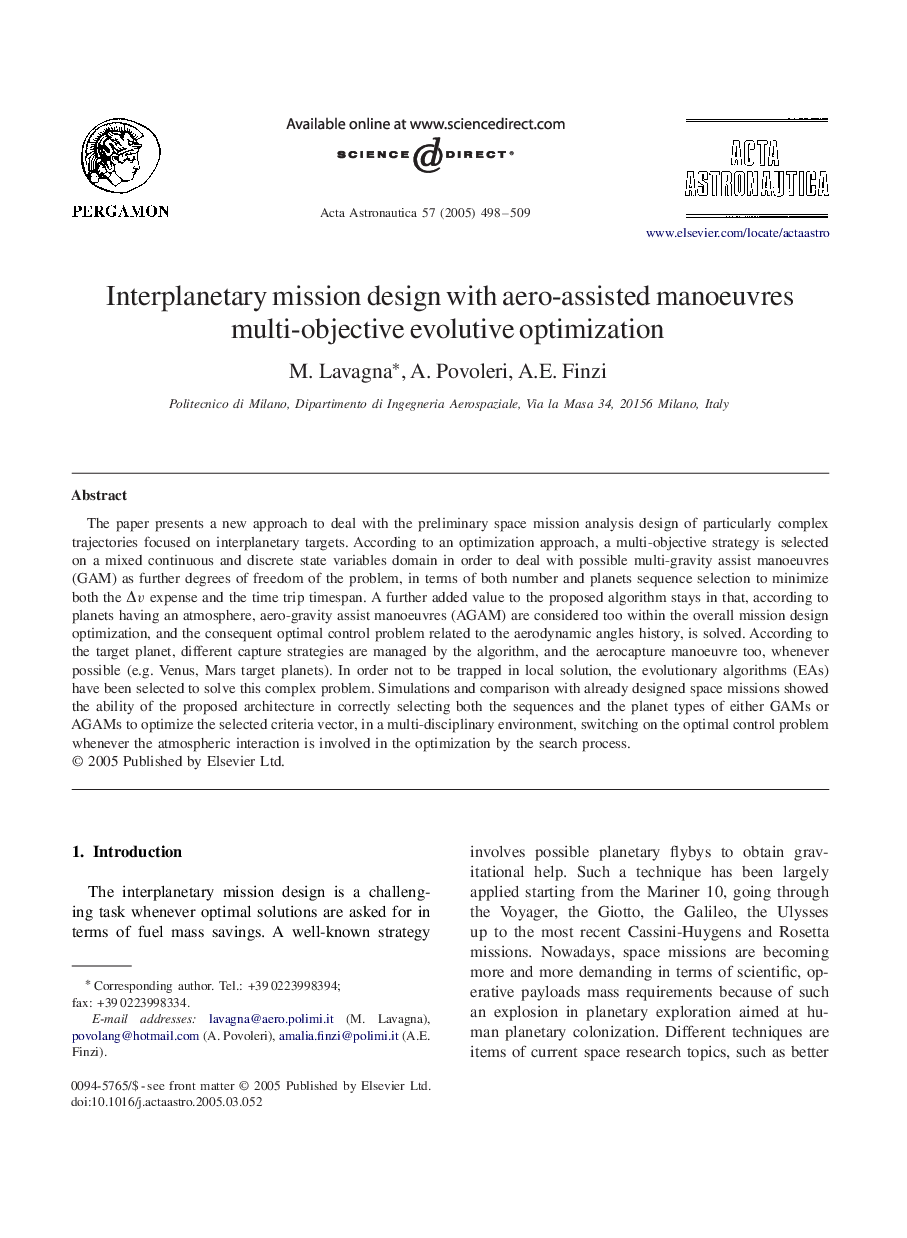| Article ID | Journal | Published Year | Pages | File Type |
|---|---|---|---|---|
| 9823159 | Acta Astronautica | 2005 | 12 Pages |
Abstract
The paper presents a new approach to deal with the preliminary space mission analysis design of particularly complex trajectories focused on interplanetary targets. According to an optimization approach, a multi-objective strategy is selected on a mixed continuous and discrete state variables domain in order to deal with possible multi-gravity assist manoeuvres (GAM) as further degrees of freedom of the problem, in terms of both number and planets sequence selection to minimize both the Îv expense and the time trip timespan. A further added value to the proposed algorithm stays in that, according to planets having an atmosphere, aero-gravity assist manoeuvres (AGAM) are considered too within the overall mission design optimization, and the consequent optimal control problem related to the aerodynamic angles history, is solved. According to the target planet, different capture strategies are managed by the algorithm, and the aerocapture manoeuvre too, whenever possible (e.g. Venus, Mars target planets). In order not to be trapped in local solution, the evolutionary algorithms (EAs) have been selected to solve this complex problem. Simulations and comparison with already designed space missions showed the ability of the proposed architecture in correctly selecting both the sequences and the planet types of either GAMs or AGAMs to optimize the selected criteria vector, in a multi-disciplinary environment, switching on the optimal control problem whenever the atmospheric interaction is involved in the optimization by the search process.
Related Topics
Physical Sciences and Engineering
Engineering
Aerospace Engineering
Authors
M. Lavagna, A. Povoleri, A.E. Finzi,
